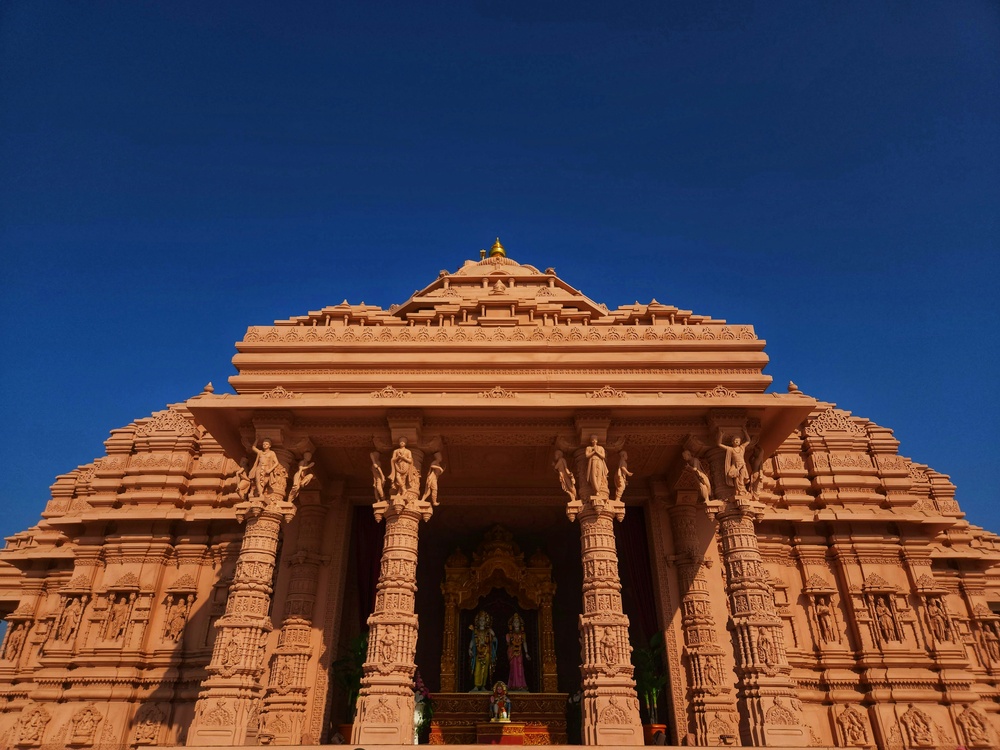Ayodhya Travel Tips: Know the Best Time to Visit for Spiritual Bliss and Sightseeing
Ayodhya, the ancient city nestled on the banks of the Sarayu River in Uttar Pradesh, is a sacred destination that blends deep spirituality, rich mythology, and historical heritage. Revered as the birthplace of Lord Rama, this holy city attracts pilgrims, historians, and curious travelers from across the globe. Whether you’re visiting for religious devotion or cultural exploration, timing your trip is key to experiencing Ayodhya at its most meaningful.
In this guide, we’ll share essential Ayodhya travel tips and reveal the best time to visit Ayodhya for spiritual bliss, festive celebrations, and comfortable sightseeing.
Why Timing Matters in Ayodhya
Ayodhya’s spiritual energy is always present, but your experience can vary significantly depending on the season. From the festive glow of Deepotsav to the serene monsoon mornings along the Sarayu, each season offers a unique atmosphere. Choosing the right time can help you avoid extreme weather, crowds, or logistical inconveniences—making your journey smoother and more rewarding.
Winter (October to March): The Best Time to Visit Ayodhya
Temperature Range: 8°C to 25°C
Winter is considered the best time to visit Ayodhya, offering cool, pleasant weather ideal for temple visits, walking tours, river rituals, and exploring the city’s rich religious and architectural sites.
What Makes Winter Ideal:
- Comfortable climate for all-day sightseeing
- Less humidity, more energy for walking between temples and ghats
- Hosts major religious festivals and cultural events
Must-See in Winter:
- Ram Janmabhoomi Temple
- Hanuman Garhi
- Kanak Bhawan
- Evening Aarti at Sarayu River
Major Events:
- Deepotsav (October/November): Ayodhya is illuminated with lakhs of earthen lamps in celebration of Lord Rama’s return from exile.
- Diwali: Celebrated with unmatched devotion and grandeur.
- Makar Sankranti (January): Marked by holy dips in the Sarayu and temple rituals.
- Ram Navami (March/April): Celebrates Lord Rama’s birth; includes processions, bhajans, and mass participation.
Travel Tip: Book accommodations early if visiting during festivals like Deepotsav or Ram Navami, as the city sees an influx of pilgrims.
Summer (April to June): Spiritually Rich, Weather-Wise Challenging
Temperature Range: 28°C to 45°C
Summer in Ayodhya can be extremely hot and dry, with temperatures frequently rising above 40°C. This is not an ideal time for general sightseeing, but some spiritual travelers still visit for specific religious observances.
Why You Might Still Consider Summer:
- Ram Navami: If the festival falls in early April, it can be worth enduring the heat to witness the grand celebrations.
- Lesser crowds outside of festival days make for quieter temple visits.
Travel Tips:
- Visit temples early in the morning or in the evening.
- Carry sunscreen, water, a hat, and breathable cotton clothes.
- Opt for hotels with air-conditioning to escape the midday heat.
Monsoon (July to September): Quiet, Green, and Spiritually Soothing
Temperature Range: 25°C to 35°C
Rainfall: Moderate to heavy showers
Monsoon brings a refreshing green landscape and a quieter spiritual ambiance. Though the rains can sometimes interrupt travel plans, this season has a tranquil charm and is ideal for those seeking a reflective, peaceful visit.
Why Monsoon is Worth It:
- Shravan Maas (July–August): A holy month for devotees, especially of Lord Shiva.
- Lush greenery enhances the city’s beauty and spiritual aura.
- Fewer tourists mean a more intimate connection with sacred spaces.
Monsoon Travel Tips:
- Carry waterproof shoes, an umbrella, and a raincoat.
- Check weather forecasts for river-level warnings or local disruptions.
- Enjoy slow, meditative walks along the ghats when it isn’t raining.
Month-by-Month Breakdown: Best Time to Visit Ayodhya
| Month | Weather | Events / Highlights | Recommendation |
| October | Pleasant | Deepotsav begins, ideal for sightseeing | Highly Recommended |
| November | Cool and festive | Diwali celebrations | Peak Season |
| December | Crisp, cool evenings | Spiritual calm, ideal for peaceful travel | Recommended |
| January | Cold mornings | Makar Sankranti | Recommended |
| February | Mild temperatures | Low crowds, great for relaxed visits | Recommended |
| March | Warm and festive | Ram Navami begins (dates vary) | Great for Spiritual Visits |
| April | Hot | Ram Navami peak (if scheduled), avoid midday outings | Visit for Festival Only |
| May–June | Extremely hot | Minimal activity, suitable only for devout travelers | Not Recommended |
| July–August | Rainy and humid | Shravan Maas, peaceful ambiance | Good for Quiet Spiritual Trips |
| September | Transitional, humid | Lush landscapes, off-season benefits | Moderate Recommendation |
General Ayodhya Travel Tips
- Dress Modestly: Traditional attire or conservative clothing is expected in and around temples.
- Stay Near Temples: Accommodations close to Ram Janmabhoomi or Hanuman Garhi provide easy access to major sites.
- Local Guides Add Value: Hiring a certified guide can enrich your understanding of Ayodhya’s religious and historical context.
- Transportation: Rickshaws and autos are readily available, but walking between key sites is also possible and spiritually rewarding.
- Evening Aarti is a Must: The spiritual experience at the Sarayu River Aarti is unforgettable—don’t miss it.
Conclusion
Ayodhya is a place where myth, devotion, and culture converge in a deeply moving way. Whether you want to experience the city’s grandest festivals or enjoy quiet reflection at its sacred temples, the best time to visit Ayodhya depends on your goals.
For most travelers, October to March offers the most enjoyable combination of good weather, vibrant celebrations, and spiritual atmosphere. But if you’re drawn by devotion or solitude, every season has something divine to offer.
With the right timing and thoughtful planning, your trip to Ayodhya can become more than just a visit—it can be a journey of inner peace and spiritual bliss.

